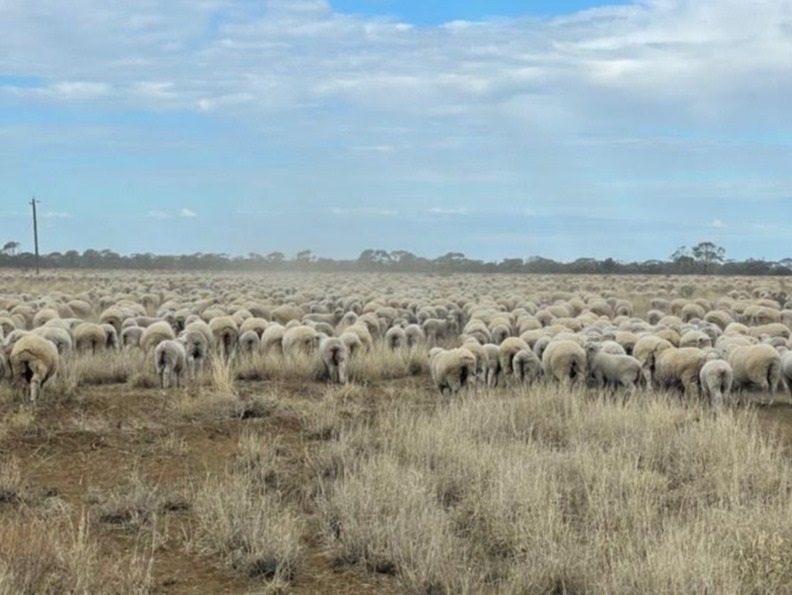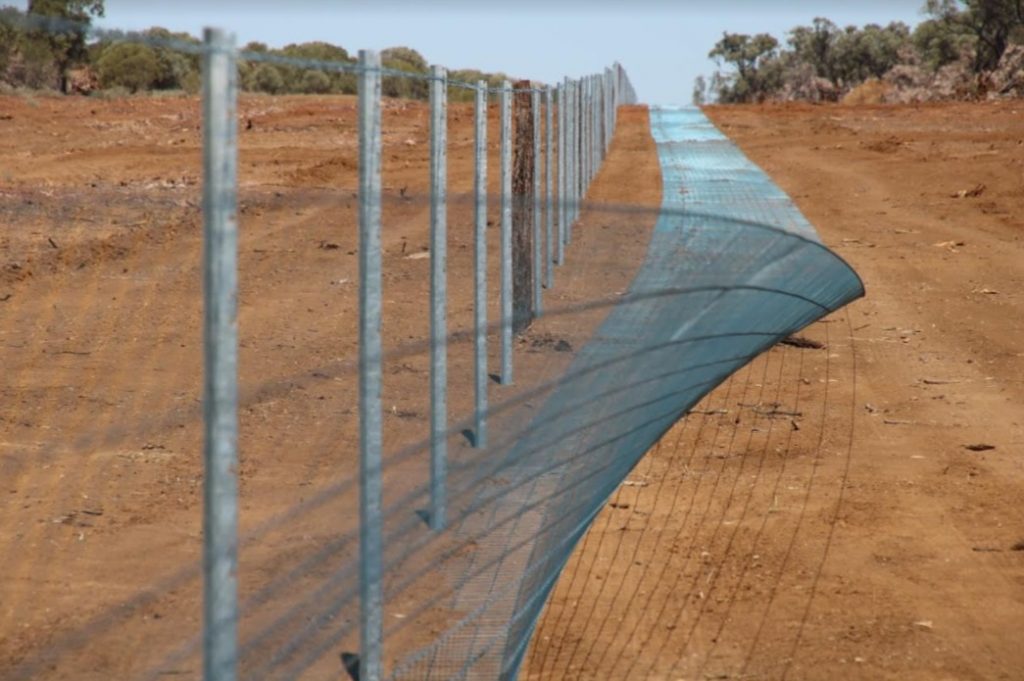
Producers are restocking with sheep behind exclusion fencing in central west Queensland.
PREDATOR-PROOF fencing has increased sheep numbers across central west Queensland shires by almost triple the state average in recent years and created a basis for further growth.
The exclusion fencing has helped sheep numbers in the shires of Barcaldine, Blackall-Tambo, Longreach, Winton and Barcoo, grow an estimated 45.7 percent from 2015-16 to 2018-19, compared to statewide flock growth of 15.8pc in the same period.
Current sheep data for the shires are not yet available, and RAPAD senior regional development manager Morgan Gronold said the areas still face challenges, though cluster fencing has enabled people to get back into small stock in some way.
“Before they had no option.”
Based on producer feedback, an evaluation by consultants Hall Chadwick has forecast sheep numbers in the region will increase by 727,000 and cattle will reduce by 57,000 by 2031, generating a regional gross margin increase of $28 million, an extra 140 agricultural jobs and a total regional economic benefit of $33.55 million.
Mr Gronold said the area was still recovering from the drought and wild dog impacts, and restocking is being limited by seasonal conditions, and high sheep, goat and cattle prices. He said some properties would need thousands of sheep to get back to pre-drought levels.
“We don’t expect that to happen overnight, but equally that’s where they want to get to.
“A lot of people here are trying to sell cattle off to buy small stock.”
Some former Merino wool producers are looking at restocking shedding sheep and goats due to the high price of wool sheep, Mr Gronold said.
More exclusion fencing development expected

An exclusion fenceline in Queensland nearing completion.
Subsidised cluster fencing programs have been oversubscribed, low interest rates have enabled private funding and there is also demand for further development, Mr Gronold said.
“At the field days in Barcaldine today (Tuesday), it is just wall-to-wall wire resellers because there is just that much interest in it.”
A dedicated effort by the Central Western Queensland Remote Area Planning and Development Board (RAPAD) and landholders has resulted in 2.2 million hectares protected from wild dogs by exclusion fencing over the past six years.
The cost of fencing has been offset by the long-term community benefits of job creation, improved landholder wellbeing, increased wool production and property investment, economic boost for ag service providers and stemmed population decline in the Central West.
After four rounds of combined federal and state government funding under the Queensland Feral Pest Initiative (QFPI) in the region there are now:
41 fencing clusters
168 landholders involved
4020km of fencing (at an average of $10,351/km)
2.257 million ha fenced
The QFPI contributed $11.8 million in funding and was matched by landholder funding of $29.7 million. The return on the government money is $2.38 every year for every $1 of one-off Government funding.
Applications are now being processed for a fifth round worth $2.2 million in QFPI funding for the Barcaldine, Longreach, Blackall-Tambo, Winton and Barcoo Shires. RAPAD aims to increase fencing to 15,000km and the protected area to 10 million ha.
Mr Gronold said the cluster fencing initiative was developed by sheep producers to protect the region’s sheep and wool industry, with support from regional councils driving the process to control population decline and boost regional economies in western Queensland townships.
“The producers looked at a couple of fencing models including a check fence model or a big circle around five shires, through to the present unregulated cluster fence model based on a volunteer program,” he said.
This model was developed by the local producers with assistance from industry and National Wild Dog Management co-ordinator Greg Mifsud, and formed the basis for the state government’s Feral Pest Initiative fencing guidelines.
“The cluster fence model provides control of your finances, time, mental health and well being,” Mr Gronold said.
He said cluster fencing gave people something to focus on and deliver during drought.
“Every funding round has been oversubscribed and for the first time we are seeing different rates of agistment (behind or not behind fences), and investors from NSW buying properties behind wire.”
The value of wool, sheep and lamb meat from the region rose by 21pc during 2015-2019, with wool more than doubling in value over the period, up by 118pc.
RAPAD and Australian Wool Innovation have run shearer and wool handling schools to boost skills and fill job vacancies in tandem with the flock expansion.
“The increase in wool sheep within the shires associated with RAPAD and those further to the south is generating confidence in the region to develop additional infrastructure and businesses to service the sheep and wool industry,” Mr Gronold said.
“The proposed Blackall Wool Handling and Receival Facility was a perfect example of the types of projects being planned for the region.
“We can’t regulate when people will bring back wool sheep given current markets and seasonal conditions, so it’s really about giving people the opportunity to get back into small stock or diversify with a split between cattle and sheep,” he said.
“It has certainly helped build momentum and the case for manufacturing to occur in Australia again.
“We need long term diversified economies – (the fencing) has provided a base, otherwise if people keep chasing wild dogs then the rest of the business suffers at the end of the day,” Mr Gronold said.
“Arguably it is the biggest infrastructure project we have ever seen out here.”
Blackall-Tambo Regional Council mayor Andrew Martin said the first entirely Blackall shearing team had returned to the area after 15 years as sheep numbers increased. The region had suffered a 75pc drop in sheep numbers, he said.
“There used to be six to eight teams operating out of Blackall and two to three out of Tambo in the past,” he said.
Expected wool production increase is underpinning processing project
With the state’s wool production expected to increase by 10 million kg out of the region, the Blackall-Tambo Regional Council commissioned a feasibility study on the Blackall Wool Handling and Receival Facility to value add fibre-to-fabric.
The proposed $198 million facility would carry out scouring and carbonizing, top making, and yarn spinning and dyeing. During operations, the facility is estimated to generate $116.3 million in gross regional product a year, 812 direct and indirect jobs and pay a total of $44.1 million in wages a year.
Queensland Wool Processors are now interested in developing the end-to-end processing facility.
As an advisor on the project, Mr Martin said an internal rate of return of 12pc was forecast for the mill.
“There is a better return to the community in sheep as every $1 a wool grower makes creates $6 (in the supply chain).
“I can see upwards of one million sheep in this area in the next five years given when the seasons turn.”
Caption: The value of wool, sheep and lamb meat from the region rose by 21 per cent during 2015-2019, with wool more than doubling in value over the period (up by 118 per cent).
Do you have anything to say about this?
Sheep Central readers would appreciate you sharing your experiences with exclusion fencing and what it has meant to your operation in the comment section below. How has the advent of predator-proof fencing changed your attitude to land management, your balance sheet and your desire to stay on the land?

HAVE YOUR SAY